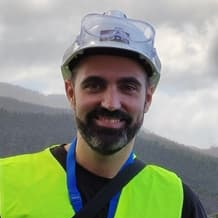Landscape Heritage: Geomorphology, Geoheritage and Geoparks
A special issue of Land (ISSN 2073-445X). This special issue belongs to the section "Land Planning and Landscape Architecture".
Deadline for manuscript submissions: 31 August 2024 | Viewed by 19612
Special Issue Editors
2. Canary Islands Volcanology Institute – INVOLCAN, 38320 La Laguna, Tenerife, Spain
Interests: geoheritage; geoparks; geotourism; volcanic geomorphology; volcanoes; natural hazards; physical geography; land planning
2. Canary Islands Volcanology Institute – INVOLCAN, 38320 La Laguna, Tenerife, Spain
Interests: volcanoes; volcanic geomorphology; geoheritage; geoparks; geotourism; geodiversity; human geography
Special Issues, Collections and Topics in MDPI journals
Special Issue Information
Dear Colleagues,
The aim of this Special Issue on Landscape Heritage: Geomorphology, Geoheritage and Geoparks is to expose to the international scientific community to the most innovative studies that are being developed in the field of applied geomorphology, especially those related to the conservation, protection and sustainable management of abiotic heritage, and its relationship with other territorial aspects (ecosystemic, historical-cultural, educational and divulgation) and exceptional landscapes. Activities such as geotourism should take advantage of current studies to promote sustainable development based on the land planning of areas with exceptional geomorphology and geoheritage worldwide, especially in protected natural areas (national or natural parks) and UNESCO global geoparks (declared, aspiring or in project).
This Special Issue aims to cover, without being limited to, the following topics:
- Landscape heritage: works on the planning, conservation and sustainable management of the landscape will be welcome, especially those related to the abiotic heritage of the territory (geomorphology), applied to protected natural areas and, especially, to geoparks.
- Geomorphology: works carrying out new study methods in geomorphology (morphometry, morphological classifications, natural risks (e.g., geohazards), geoheritage management, new technologies in the study of landforms (e.g., drones, remote sensing), environmental education, etc.).
- Geoheritage: the management of territories with a geological-geomorphological base of international significance is key to understanding how abiotic aspects (geology and geomorphology) have influenced other geographical aspects such as ecosystems (distribution of plants and animals) or human societies, their history and their culture. Works that implement new methods of analysis and geoheritage evaluation, classification, comparison, geoconservation and protection, environmental divulgation and education, and landscape analysis, among others, are welcome.
- Geoparks: territories under the auspices of UNESCO, where their exceptional geology/geomorphology has served for the conservation and protection of nature (both abiotic and ecosystem-level), examples of sustainable territorial management, implementation of geotourism (new products, georoutes, new activities), new technologies in geoparks land use planning, and laboratories for environmental education and population awareness.
Prof. Dr. Rafael Becerra-Ramírez
Prof. Dr. Javier Dóniz-Páez
Guest Editors
Manuscript Submission Information
Manuscripts should be submitted online at www.mdpi.com by registering and logging in to this website. Once you are registered, click here to go to the submission form. Manuscripts can be submitted until the deadline. All submissions that pass pre-check are peer-reviewed. Accepted papers will be published continuously in the journal (as soon as accepted) and will be listed together on the special issue website. Research articles, review articles as well as short communications are invited. For planned papers, a title and short abstract (about 100 words) can be sent to the Editorial Office for announcement on this website.
Submitted manuscripts should not have been published previously, nor be under consideration for publication elsewhere (except conference proceedings papers). All manuscripts are thoroughly refereed through a single-blind peer-review process. A guide for authors and other relevant information for submission of manuscripts is available on the Instructions for Authors page. Land is an international peer-reviewed open access monthly journal published by MDPI.
Please visit the Instructions for Authors page before submitting a manuscript. The Article Processing Charge (APC) for publication in this open access journal is 2600 CHF (Swiss Francs). Submitted papers should be well formatted and use good English. Authors may use MDPI's English editing service prior to publication or during author revisions.
Keywords
- geomorphology
- geodiversity
- geosites
- geomorphosites
- geoheritage
- geoparks
- geoconservation
- geoeducation
- land planning
- landscape analysis
- environmental education
- ecosystems and geoparks
- ecosystem services
- natural protected areas






